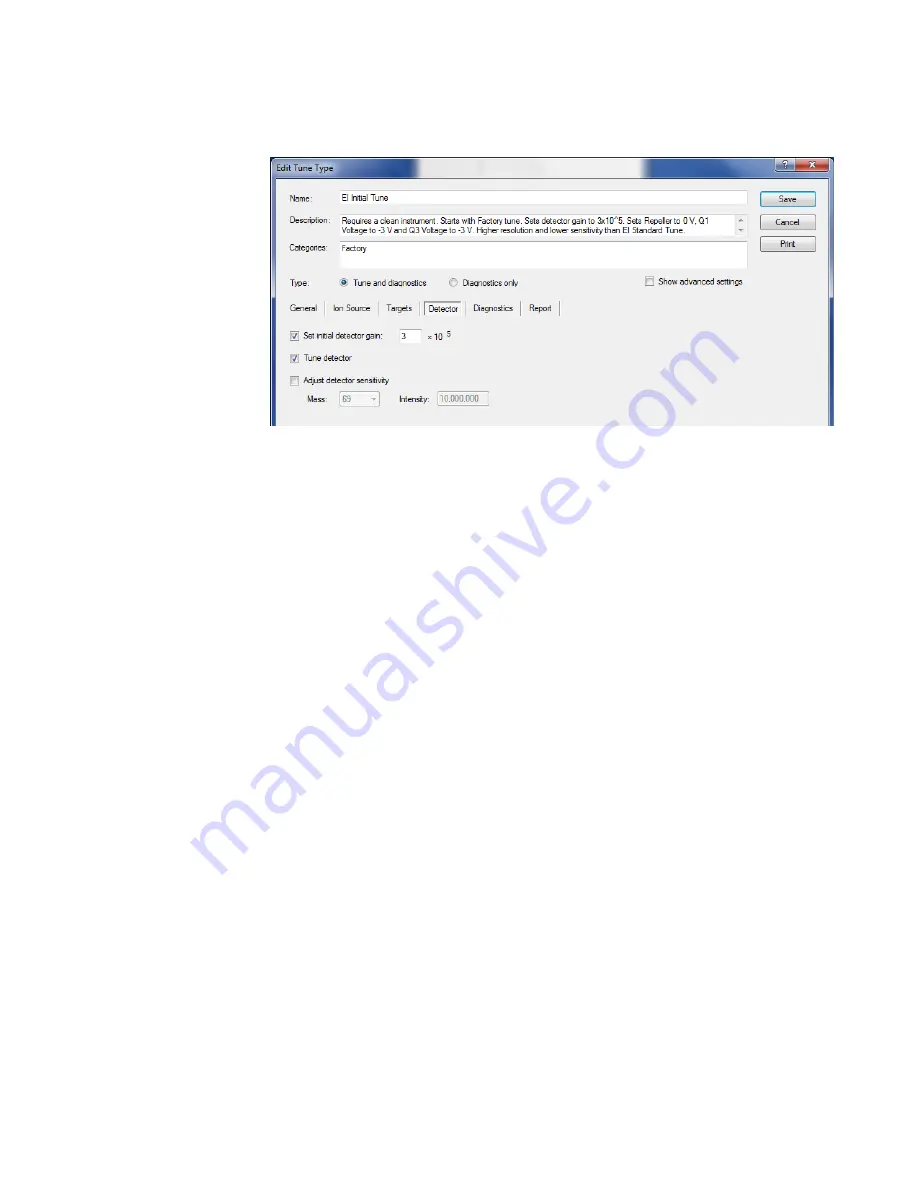
5
Optimizing Your Method
Modifying an Automatic Tune
Thermo Scientific
TSQ 8000 Evo User Guide
101
Figure 99.
Configuring the Detectors
a.
Set Initial Detector Gain—
Select this option to set the electron multiplier gain that
will be used in tuning the instrument. The gain is the number of electrons generated
for every ion that strikes the detector. This is typically set at 3 × 10
5
electrons per ion.
Gains larger than this will generate more electrons per ion, but both the analyte ion
and the noise ion signals will be larger. You can also tune to lower gain values, which
decreases the signal strength. Lower values also increase the chance that an ion will
not be detected.
b.
Tune Detector
—Select this check box to tune the detector. As the electron multiplier
ages, the voltage required for a given gain increases. Depending on your sample load
and if your system is leak tight (oxygen is bad for the detector), you should not have
to perform this tune very often. Limit to 1–2 times a year.
c.
Adjust Detector Sensitivity
—Select this check box to tune the detector to generate a
consistent area count of a calibration gas ion for the tune report. Because the intensity
of the cal gas varies depending on the atmospheric pressure and temperature of the
lab, this option results in larger variation in the analytical runs, as compared to using
a fixed detector gain. If you use this function, set the initial detector gain to 3 × 10
5
electrons per ion.
•
Mass
—Select the calibration gas mass you want to use.
•
Intensity
—Enter the intensity you want to see on the tune report.
7. Click the
Diagnostics
tab and select a test to confirm the operational ability of the
system. See
Содержание TSQ 8000
Страница 1: ...TSQ 8000 Evo Mass Spectrometer User Guide 1R120586 0002 Revision C December 2015 ...
Страница 22: ......
Страница 148: ......






























